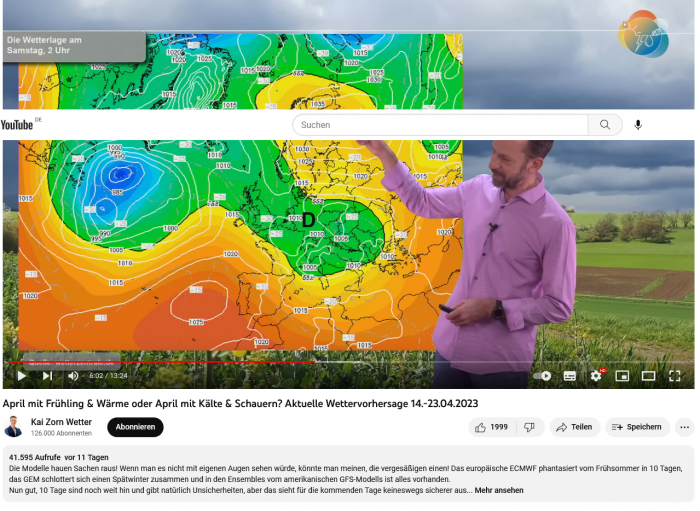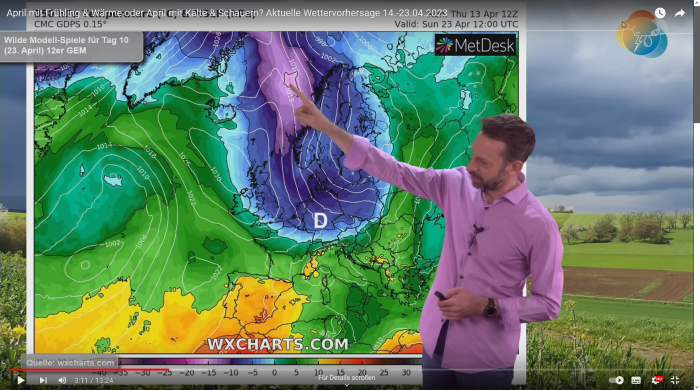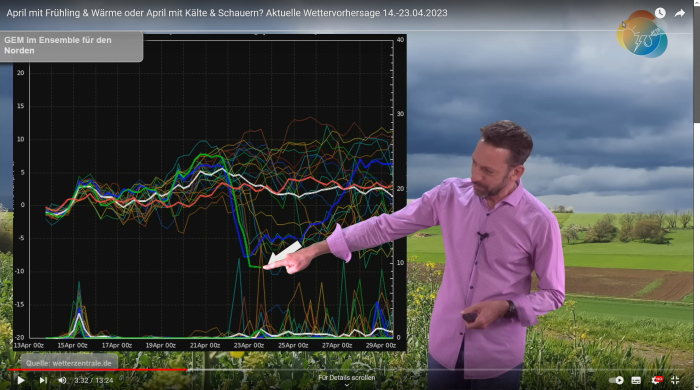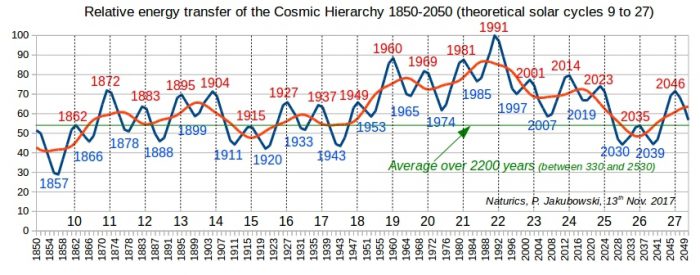The official weather forecast for spring 2023 already took into account an imminent "collapse" of the polar vortex in mid-March. Renewed snowfall at the beginning of April was not ruled out. And it did indeed happen, especially in the Alps, but also in the low mountain ranges.



These forecasts were based on the models currently used by the "weathermen". And they are extremely different. While the European model (ECMFW) predicts an early summer, the Canadian model (GEM) warns of a late winter.
A comparison of the different forecasts shows an enormous discrepancy, from extremely hot weather:

to extreme cold:

How and why did this forecast chaos come about? A dicey and topical question. Especially in connection with two more far-reaching questions: 1. how reliable are the medium and long-term weather forecasts? 2. do they still have any value for the traditional climate models?
The answers to these two important questions are unfortunately negative:
1. the current medium- and long-term weather forecasts are still very unreliable; and
2. they are worthless for a good climate model.
We already know the reason for this misery from the earlier articles on this website with its blog and app. In a nutshell: the Earth is not an isolated island in space. The cosmic winds from all the stars in the Solar System's Cosmic Hierarchy influence the Earth's global climate much more strongly than all our human activities. The "modern" climate optimum is already over and this "cosmic wind" (or more scientifically; the cosmic energy transfer) is weakening. The Solar System (including the Earth, of course) is receiving less energy from outside; it will become much colder again.
